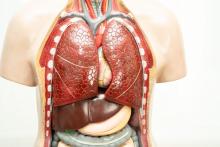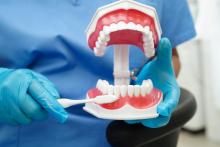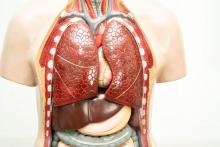Recent Publications

Lital Remez-Gabay, Olga Vdovich, Luiza Akria, Etty Kruzel-Davila: Case Report: Anti-platelet factor 4 -mediated immunothrombosis in a patient with ANCA vasculitis - a shared mechanism of NETosis (Front Immunol . )
Anti-platelet factor 4 (PF4) immunothrombosis is characterized by thrombocytopenia, thrombosis and enhanced NETosis and has been described in the absence of prior heparin exposure. This case report describes a patient with antineutrophil cytoplasmic antibody (ANCA)-associated vasculitis (AAV) who, while under immunosuppression, developed anti-PF4-mediated immunothrombosis, with NETosis significantly elevated compared to baseline markers observed during AAV.

Ilai Ben Zoor, Fadi Abboud, Wasim Mshiel, Michael Assaf, Khalil Nasrallah, Marshall Deltoff, Haim Shtarker: Septic Hip Arthritis in Children: A Comparison of Arthrocentesis and the Double Luminal Drainage Catheter (J Am Acad Orthop Surg . )
Septic hip arthritis in children is an orthopaedic emergency. While the well-established surgical treatment is open arthrotomy, several minimally invasive techniques have been offered as alternatives in recent years. The purpose of this study was to compare the clinical outcome of a continuous double luminal drainage catheter (DLDC) with repeated arthrocentesis, in the treatment of septic hip arthritis in children.

Suryakant Tiwari: UFC1 reveals the multifactorial and plastic nature of oxyanion holes in E2 conjugating enzymes (Nat Commun . )
The conjugation of ubiquitin (Ub) or ubiquitin-like proteins (UBL) to target proteins is a crucial post-translational modification that typically involves nucleophilic attack by a lysine on a charged E2 enzyme (E2~Ub/UBL), forming an oxyanion intermediate. Stabilizing this intermediate through an oxyanion hole is vital for progression of the reaction. Still, the mechanism of oxyanion stabilization in E2 enzymes remains unclear, although an asparagine residue in the conserved HPN motif of E2 enzymes was suggested to stabilize the oxyanion intermediate. Here, we study the E2 enzyme UFC1, which presents a TAK rather than an HPN motif.

Tarek Taha: Representation of the Middle East and North African Region in Oncology Clinical Trials (JAMA Oncol . )
This cross-sectional study examines the inclusion of individuals from the Middle East and North African region in oncology clinical trials.

Alon Barash: Punic people were genetically diverse with almost no Levantine ancestors (Nature . )
The maritime Phoenician civilization from the Levant transformed the entire Mediterranean during the first millennium BCE1-3. However, the extent of human movement between the Levantine Phoenician homeland and Phoenician-Punic settlements in the central and western Mediterranean has been unclear in the absence of comprehensive ancient DNA studies. Here, we generated genome-wide data for 210 individuals, including 196 from 14 sites traditionally identified as Phoenician and Punic in the Levant, North Africa, Iberia, Sicily, Sardinia and Ibiza, and an early Iron Age individual from Algeria.

Inshirah Sgayer, Lior Lowenstein, Marwan Odeh: Fetal Cerebral Ventricular Asymmetry Without Dilation: A Systematic Review (Ultraschall Med . )
The aim of this systematic review was to investigate the outcomes of pregnancies with fetal cerebral lateral ventricle asymmetry without dilation.

Raneen Abu Shqara, Omer Saporta, Daniel Glikman, Lior Lowenstein, Maya Frank Wolf: Maternal bacteremia in intrapartum fever: the role of ampicillin resistance and prolonged membrane rupture-a retrospective comparative study (Arch Gynecol Obstet .)
Intrapartum fever (IPF) (≥ 38.0 °C), if treated inappropriately, can lead to maternal bacteremia. In a cohort of women with IPF, we investigated perinatal, obstetrical, and microbiological outcomes, comparing those with bacteremia to those with negative blood cultures.

Rawi Hazzan: Autoimmune liver diseases and systemic rheumatic disorders: exploring their interplay and impact on prognosis (BMC Gastroenterol)
Autoimmune liver diseases (AILDs) are associated with systemic rheumatic diseases (SRDs) and their autoantibodies. This study investigates the prevalence of SRDs and related autoantibodies in AILD patients and their prognostic implications.

Meital Bronstein-Reinus, Fares Kablan, Iris Slutzky-Goldberg: The effect of age and preoperative diagnosis on the outcome of partial and cervical pulpotomies in immature permanent teeth (Clin Oral Investig .)
This retrospective study aimed to evaluate the effect of age and preoperative diagnosis on the outcomes of partial and cervical pulpotomies in immature permanent teeth.

Limor Kalfon, Shiran Kadmani, Nadra Samra, Tzipora C Falik-Zaccai: Targeting CD38 immunometabolic checkpoint improves metabolic fitness and cognition in a mouse model of Alzheimer's disease (Nat Commun .)
Protective immunity, essential for brain maintenance and repair, may be compromised in Alzheimer's disease (AD). Here, using high-dimensional single-cell mass cytometry, we find a unique immunometabolic signature in circulating CD4+ T cells preceding symptom onset in individuals with familial AD, featured by the elevation of CD38 expression.

Allosteric modulation of protein kinase A in individuals affected by NLPD-PKA, a neurodegenerative disease in which the PRKAR1B L50R variant is expressed (FEBS J .)
Protein kinase A (PKA) is a crucial signaling enzyme in neurons, with its dysregulation being implicated in neurodegenerative diseases. Assembly of the PKA holoenzyme, comprising a dimer of heterodimers of regulatory (R) and catalytic (C) subunits, ensures allosteric regulation and functional specificity. Recently, we defined the RIβ-L50R variant as a causative mutation that triggers protein aggregation in a rare neurodegenerative disease, neuronal loss, and parkinsonism driven by a PKA mutation (NLPD-PKA). However, the mechanism underlying uncontrolled PKA allosteric regulation and its connection to the functional outcomes leading to clinical symptoms remains elusive. In this study, we established an in vitro model using patient-derived cells for a personalized approach and employed direct measurements of purified proteins to investigate disease mechanisms in a controlled environment.
(Tal Benjamin-Zukerman, Rania Safadi-Safa, Meir Solomon, Mohammad Aboraya, Anwar Dakwar, Ronit Ilouz)

Rawi Hazzan: Risk of hepatocellular carcinoma and cirrhosis decompensation in a large retrospective cohort of cirrhotic patients with autoimmune hepatitis (Sci Rep . )
Autoimmune hepatitis (AIH) is a chronic inflammatory liver disease that can lead to cirrhosis in up to 30% of patients. Cirrhotic patients are at risk of high morbidity and mortality due to cirrhosis decompensation and hepatocellular carcinoma (HCC). This retrospective study assessed the rates of decompensated cirrhosis and HCC in patients with AIH-related cirrhosis.

Gassan Moady, Loai Mobarki, Tsafrir Or, Alexander Shturman, Shaul Atar: Echocardiography-Based Pulmonary Artery Pulsatility Index Correlates with Outcomes in Patients with Acute Pulmonary Embolism (J Clin Med .)
The pulmonary artery pulsatility index (PAPI) is a novel hemodynamic parameter that reflects right ventricular (RV) function. PAPI was shown to be useful in predicting outcomes following left ventricular assist device (LVAD) implantation, acute RV infarction, and in patients with chronic RV failure. The standard method to estimate PAPI is during right heart catheterization (RHC); however, echocardiography-based PAPI was also shown to be accurate. In the current study, we evaluated the ability of echocardiography-based PAPI to predict outcomes of patients with acute pulmonary embolism (PE).

Raneen Sawaid Kaiyal, Hala Aslih, Inshirah Sgayer, Lior Lowenstein, Ekaterina Shlush: Non obstructive azoospermia as the only indicator of focal segmental glomerulosclerosis and chronic kidney failure: A case report (Urol Case Rep . )
Azoospermia, the absence of sperm in the ejaculate, affects 1 % of men, with non-obstructive azoospermia (NOA) comprising 60 % of cases. We report a 29-year-old male with NOA and primary infertility, initially asymptomatic with history of chronic diseases and normal evaluations.




